

Pohutu Geyser
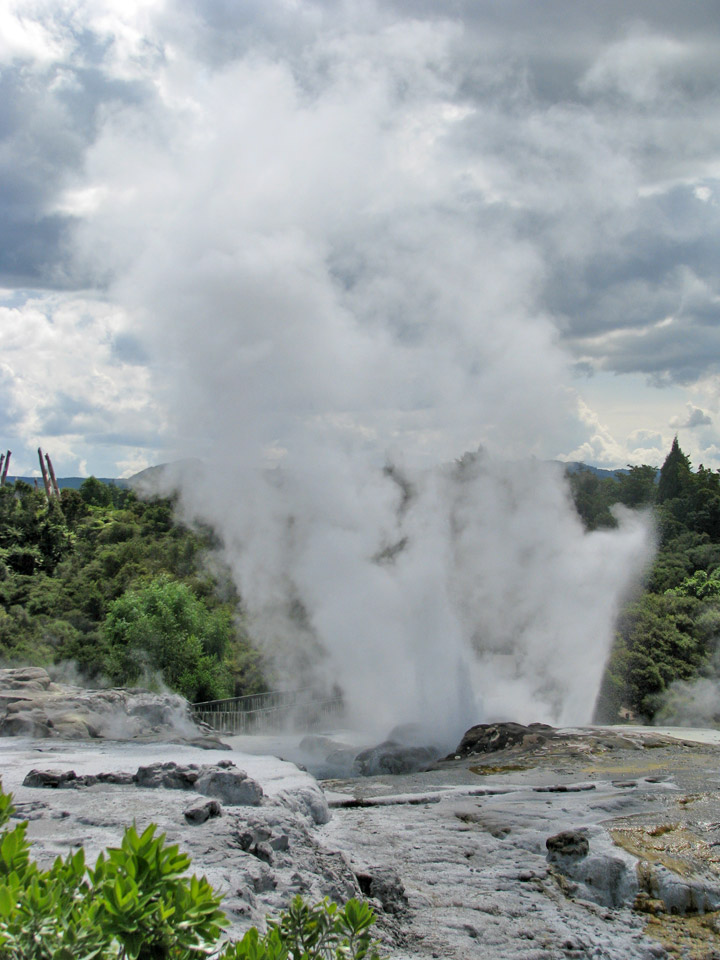
Pohutu Geyser
Whakarewarewa (reduced version of Te Whakarewarewatanga O Te Ope Taua A Wahiao, meaning The uprising of the warriors (war party) of Wahiao, often abbreviated to Whaka by locals) is a geothermal area within Rotorua city in the Taupo Volcanic Zone of New Zealand. This was the site of the Māori fortress of Te Puia, first occupied around 1325, and known as an impenetrable stronghold never taken in battle. Māori have lived here ever since, taking full advantage of the geothermal activity in the valley for heating and cooking.
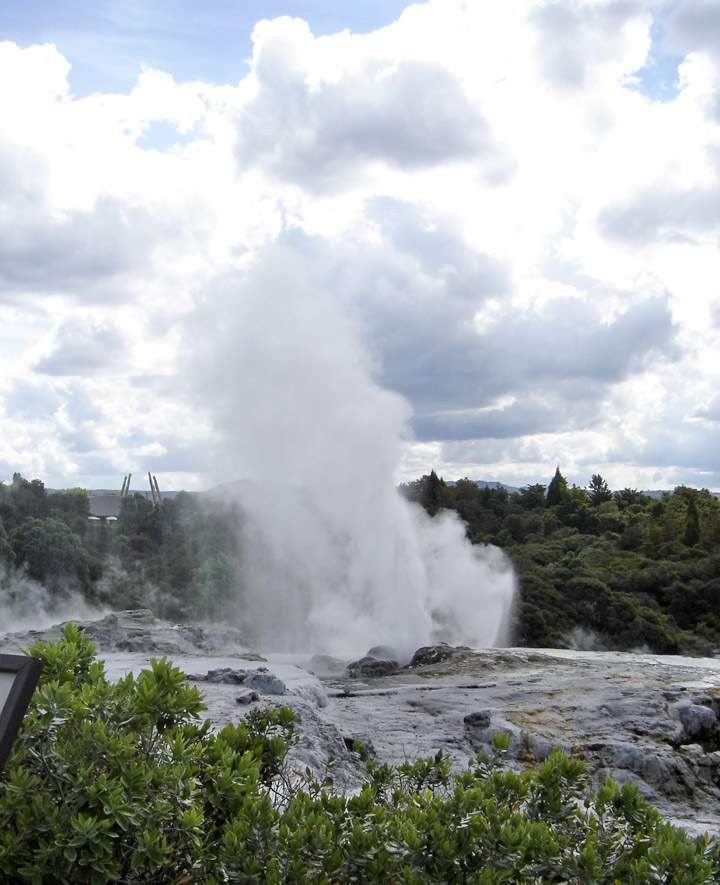
Whakawerawera has some 500 pools, most of which are alkaline chloride hot
springs, and at least 65 geyser vents, each with their own name. Seven geysers
are currently active. The most famous, Pohutu Geyser, meaning big splash or
explosion, can erupt up to 30 m, usually every hour.
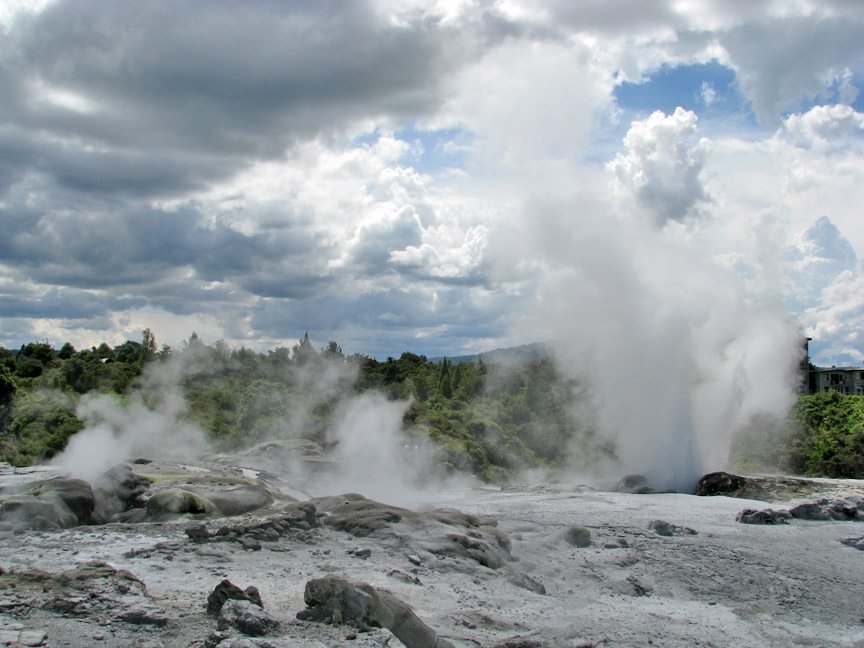
Many of the thermal features at Whakawerawera have been adversely affected by Rotorua residents taking advantage of the underlying geothermal fluids of the city by drawing shallow wells (20-200 m deep) to extract hot water for both domestic and commercial heating. A bore closure programme in 1987-1988 resulted in 106 wells within 1.5 km of Pohutu Geyser being cemented shut, with another 120 wells outside the radius being shut due to a punitive royalty charging regime. There has subsequently been a pronounced recovery in the geysers and hot springs at Whakawerawera.

mud pot
Most of the currently active geysers at Whakawerawera are located on Geyser Flat and aligned on a common fissure. This is a highly complex system, with the activity of one geyser affecting another.
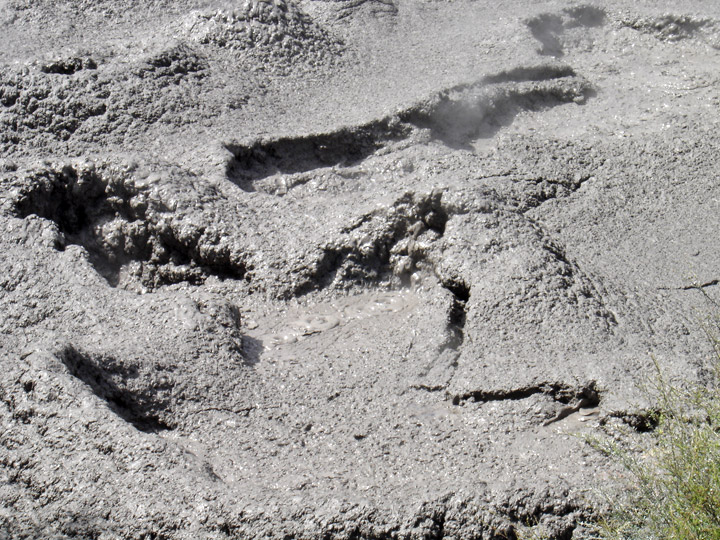
Kereru Geyser, about 2 m above Puarenga Stream, located at the head of a small
apron of blackish sinter, erupts every few days or weeks, in a fan-shaped jet 15
m high. No large eruptions occurred between 1972-1988, and it seems its recovery
was directly linked to the sudden reduction of well drawoff in 1987. Kereru
Geyser is probably independent of other springs on the fissure.
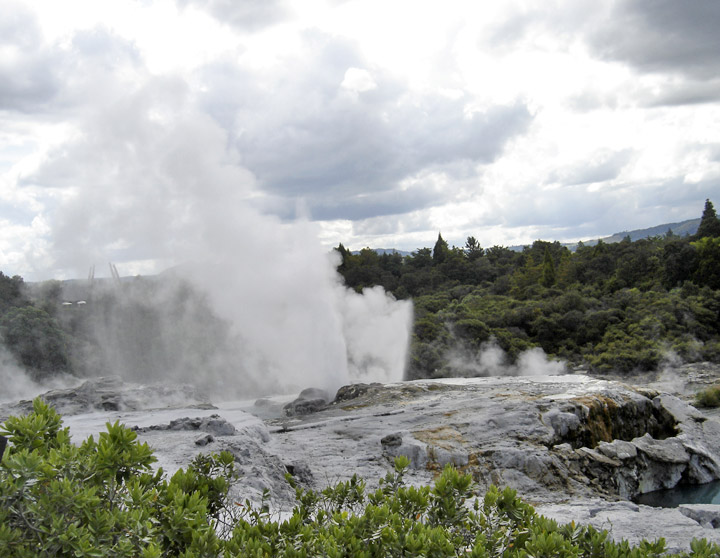
Pohutu Geyser


Prince of Wales Feathers Geyser, Pohutu Geyser, Te Horu Geyser (The Cauldron)
and Waikorohihi Geyser are on a sinter plateau about 6 m above Puarenga Stream.
Prince of Wales Feathers Geyser, Pohutu Geyser's closest neighbour, always
precedes Pohutu, a feeble jet at first but gradually increasing in power until a
continuous 9 m high column is ejected on a dramatic angle, when Pohutu usually
erupts also. Sometimes Waikorohihi Geyser erupts a discontinuous 5 m high jet,
then Prince of Wales Feathers will commence, later followed by Pohutu.
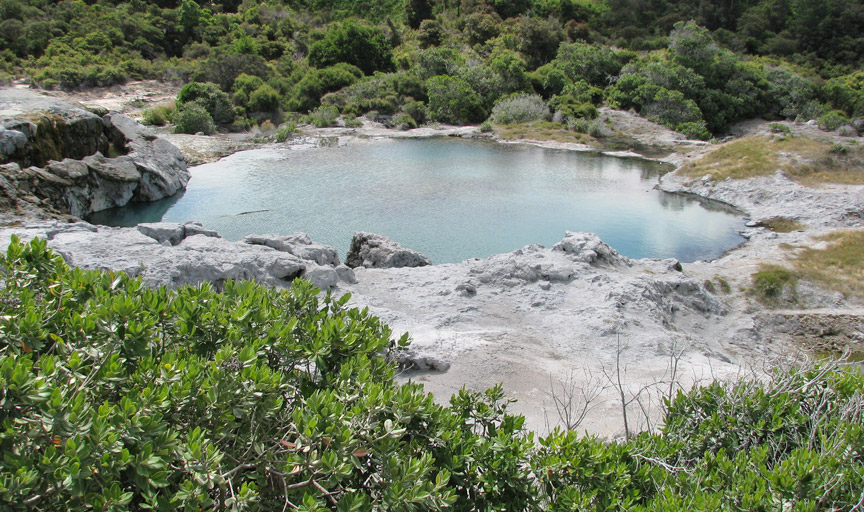
thermal pool
Until 1972, Te Horu Geyser erupted 2-7 m high as often as 10-15 times each day, but after that time eruptions and even boiling ceased. The water in Te Horu's vent began to overflow again in 1998. A very direct connection exists between Te Horu and Pohutu, with air-cooled water erupted from Pohutu largely falling in Te Horu's vent. This may explain the popular belief that Pohutu is more active when there is a south wind, because most erupted water is then blown away to the north, whereas with a north wind much is returned to cool the system and delay the next eruption.
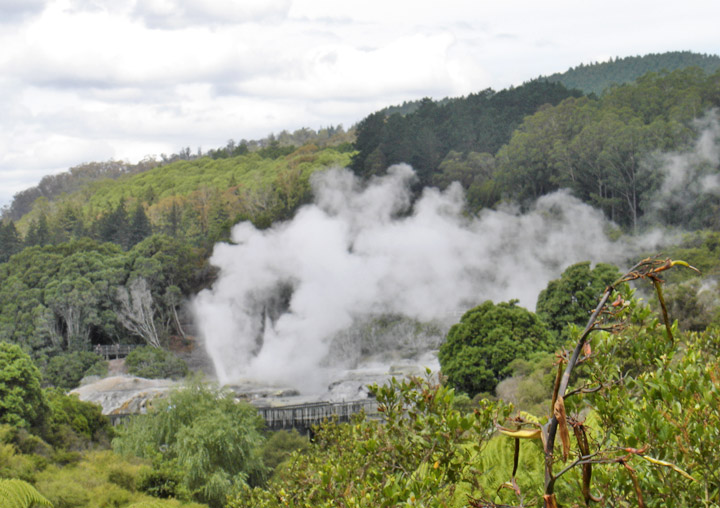
geyser basin
Mahanga Geyser, also called the Boxing Glove, is an old geyser not known to erupt until 1961. Its 3-4.5 m high eruptions occur quite independently of its near neighbour Waikorohihi.

Video 1 Video 2 Video 3 Video 4
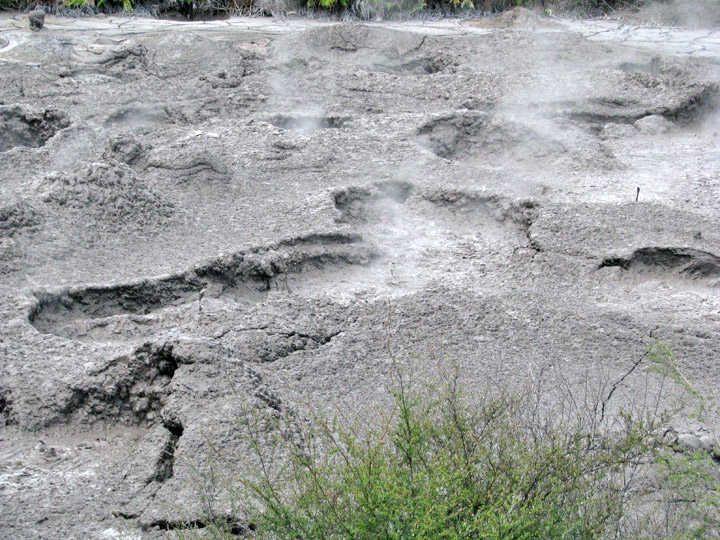
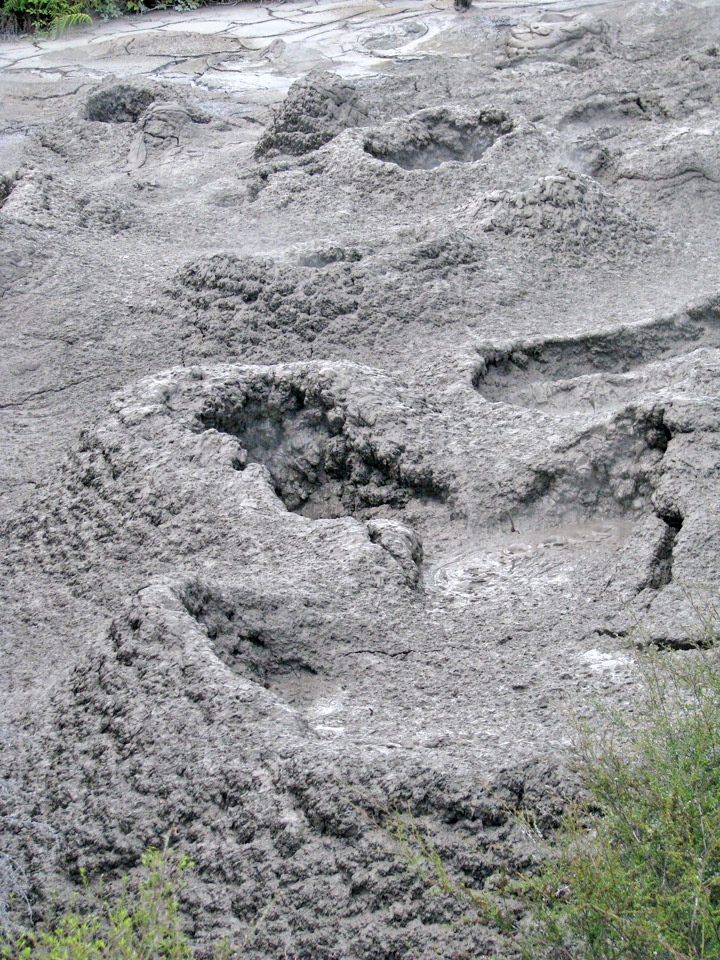
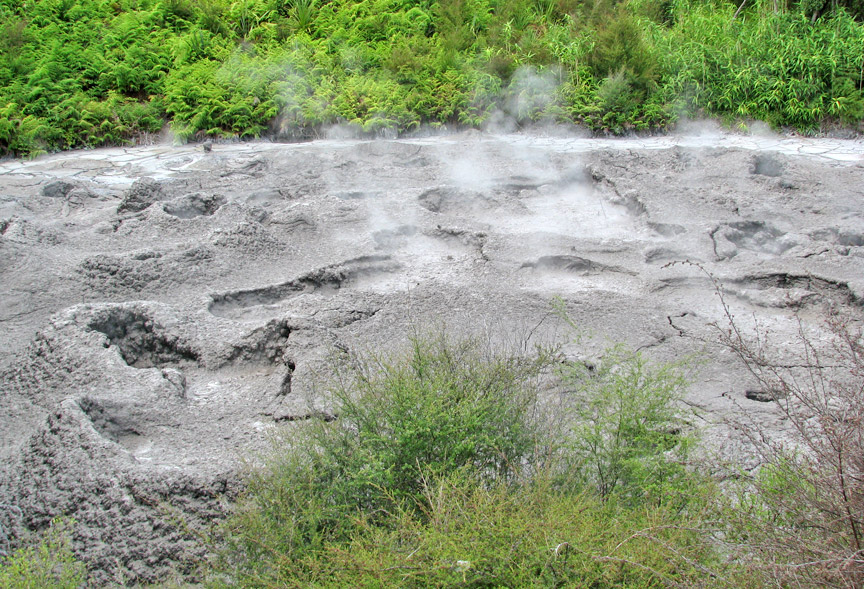
Wairoa Geyser, acclaimed as erupting 60 m high, last erupted naturally in
December 1940 after which its water level fell to 4.5 m below overflow and the
water became acidic. However, in early 1996, its water level rose to 3.2 m below
overflow, with continuous powerful boiling, and it remains so to date.
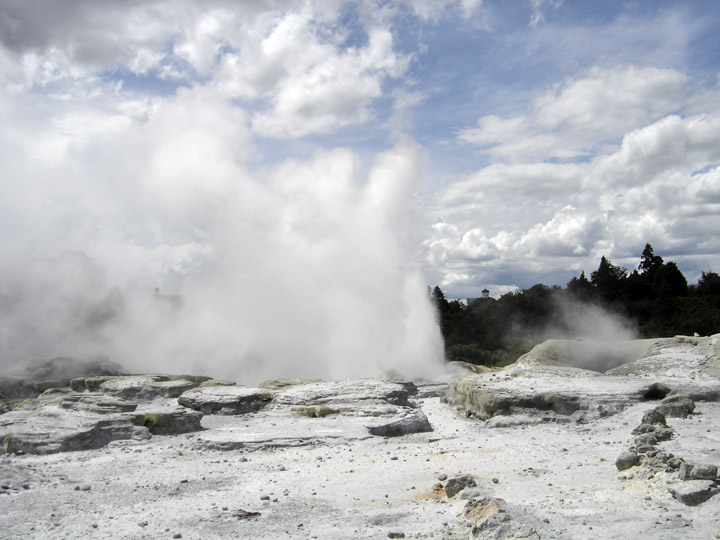
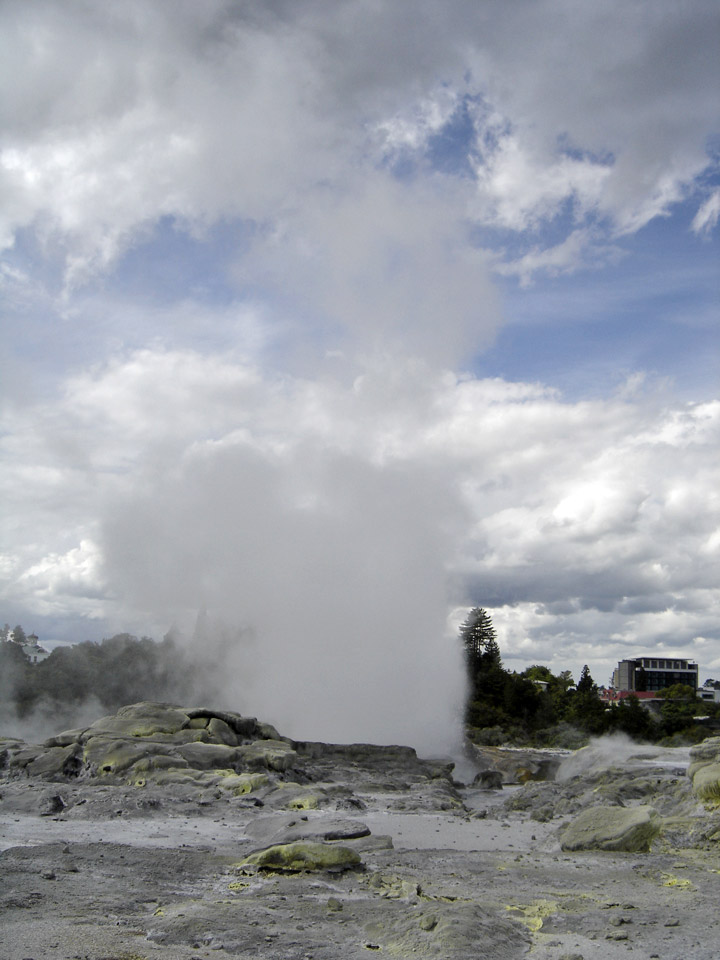
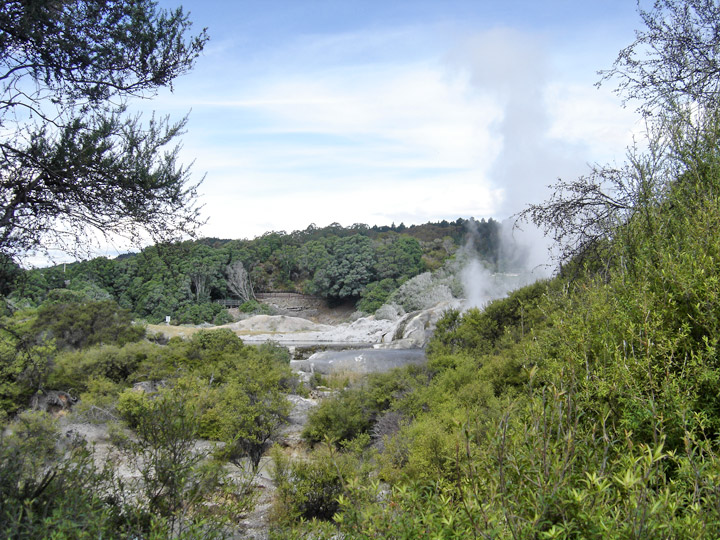
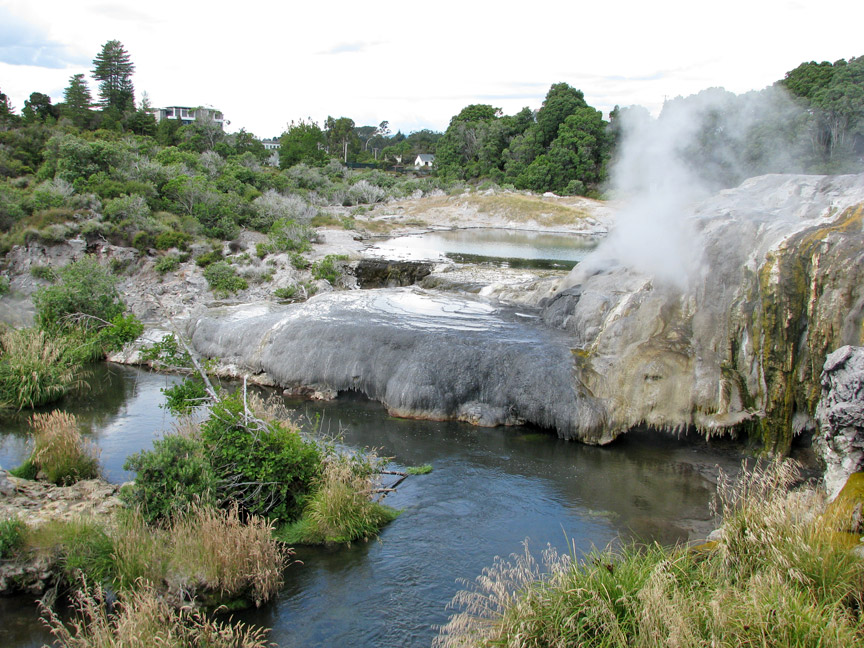
pool and terrace
Beyond Geyser Flat is Waikite Geyser, which forms the apex of a prominent sinter mound 260 m south of Pohutu. This last erupted in March 1967, and since then the vent has remained dry and weakly steaming. In June 1996, its previously 8.5 m deep and dry vent suddenly filled with boiling water which rose to within 2.3 m of overflow. In the past Waikite tended to erupt after prolonged periods of excessive rain, suggesting that the level of water in its vent is dependent on rainfall. It is hoped that Waikite may one day erupt again. Meanwhile Pareia Geyser, just beyond Waikite, has recently reactivated.
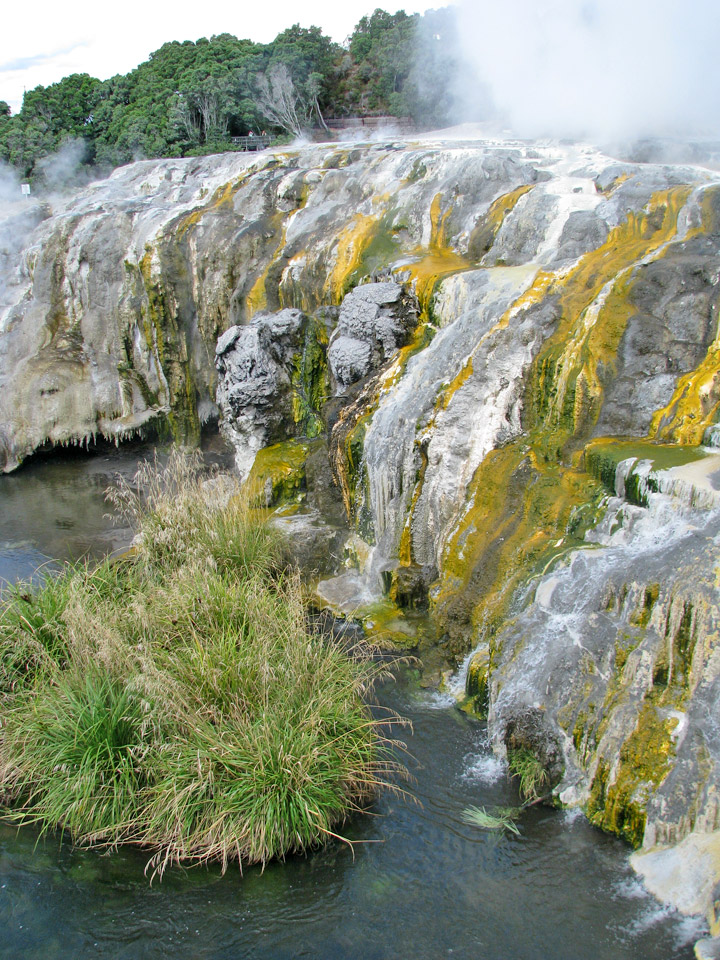


sulfur stained terrace
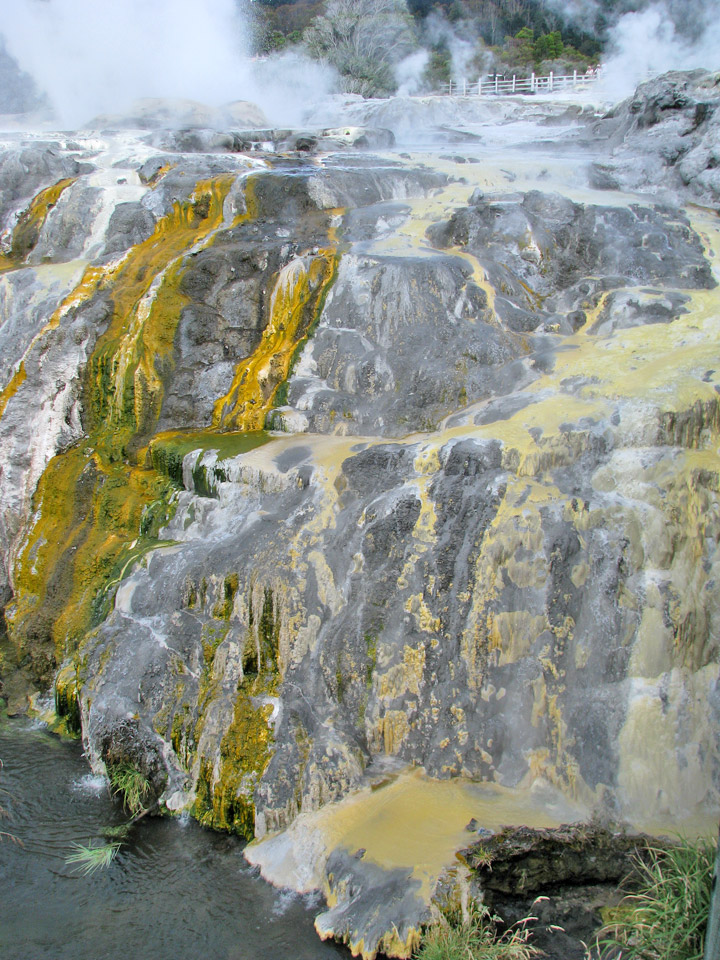
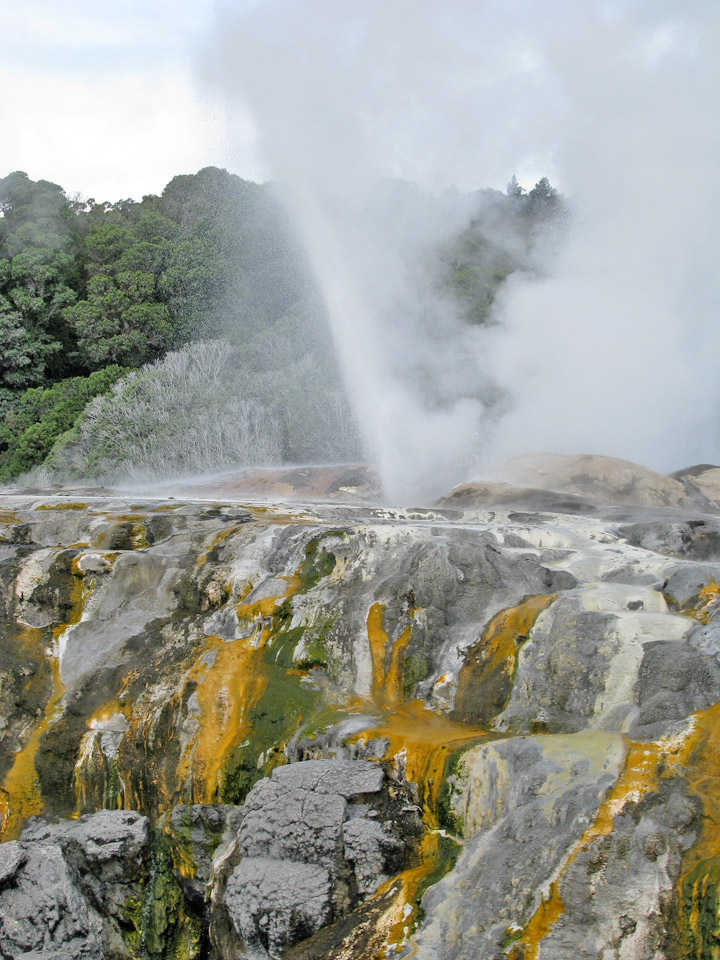
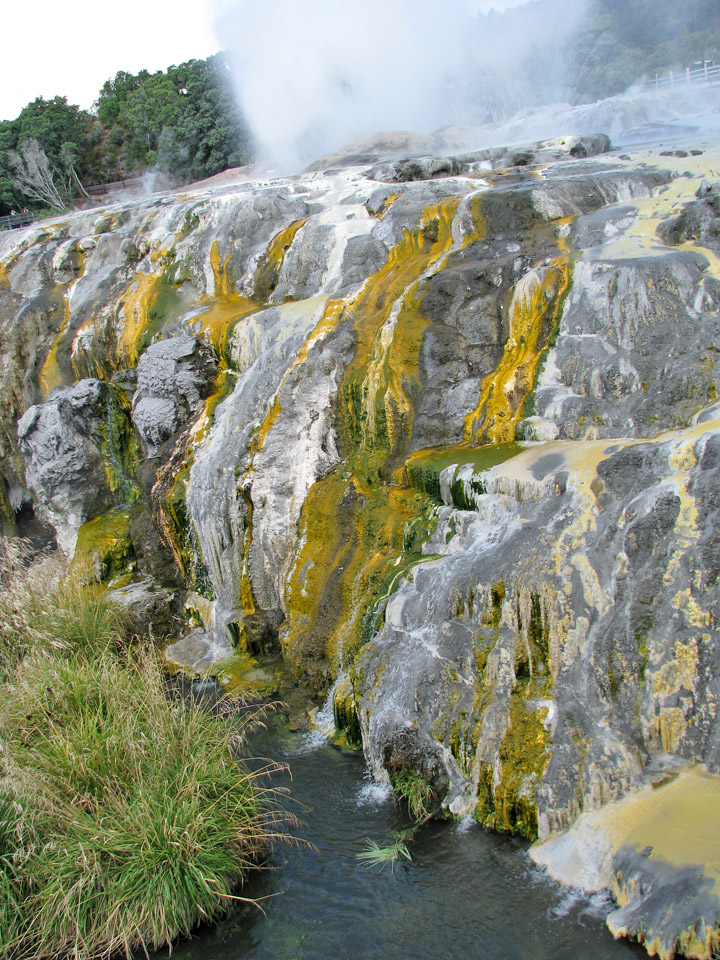
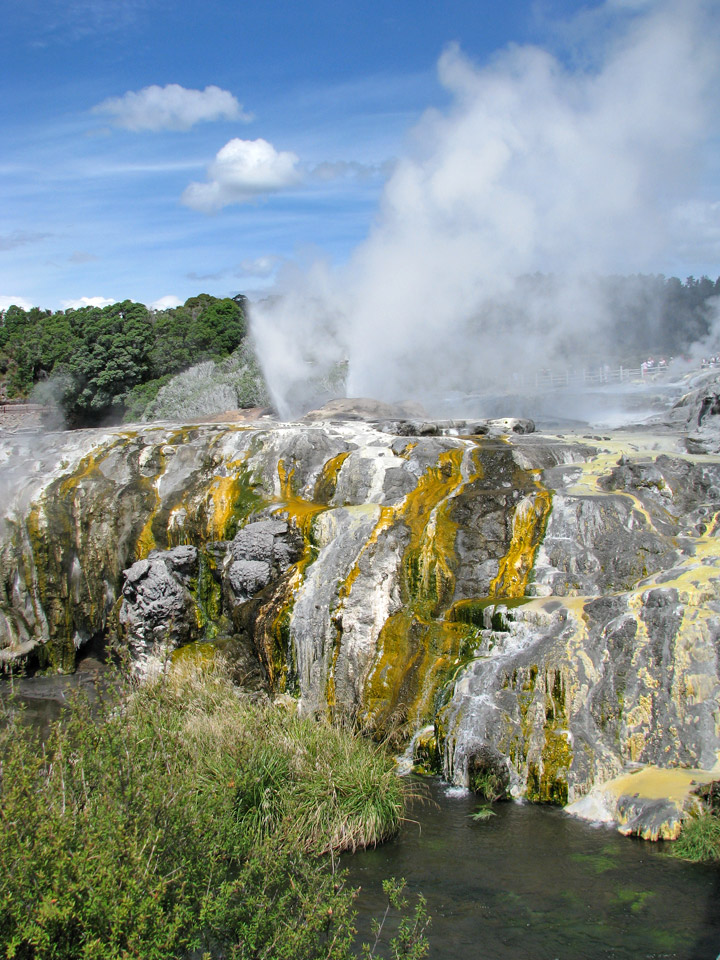
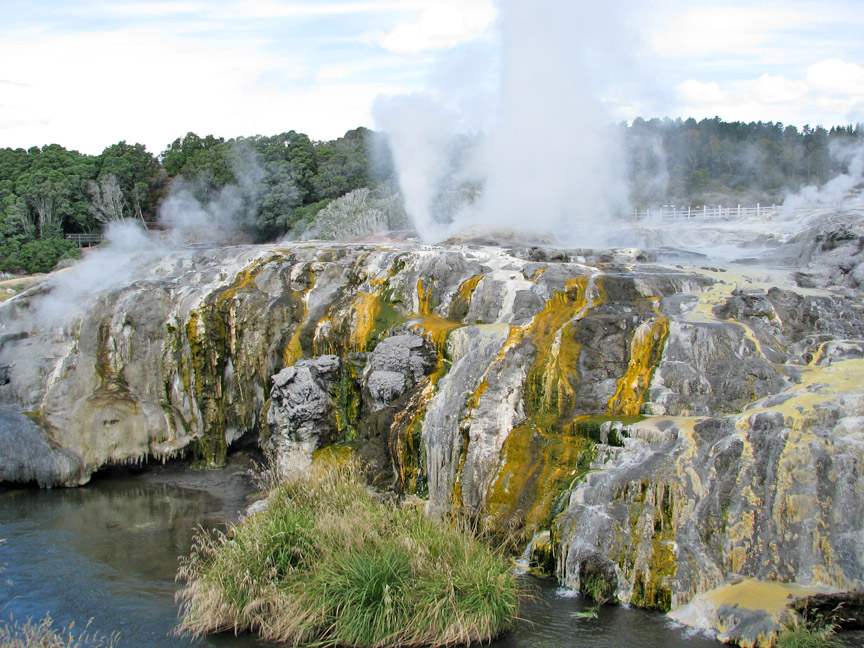
Papakura Geyser is the other notable dormant geyser at Whakarewarewa, last
erupting in March 1979 after a 90 year period during which it was known to have
faltered very briefly only three times. The cessation of eruptions from Papakura
was directly responsible for initiating the Rotorua Monitoring Programme in
1981. Papakura has not recovered to date, although in October 1997 the fluid in
the vent had heated to about 60 degrees Celsius and become clear and alkaline
once more
Text from Wikipedia
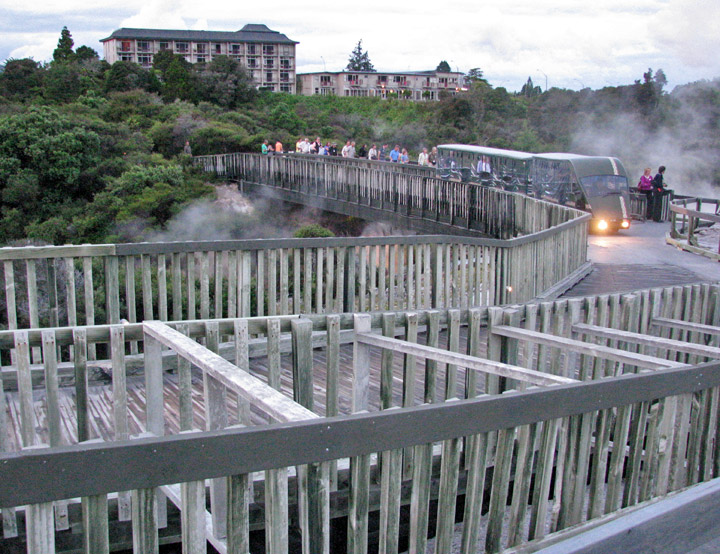
after the evening show the buses bring the guests to the geysers
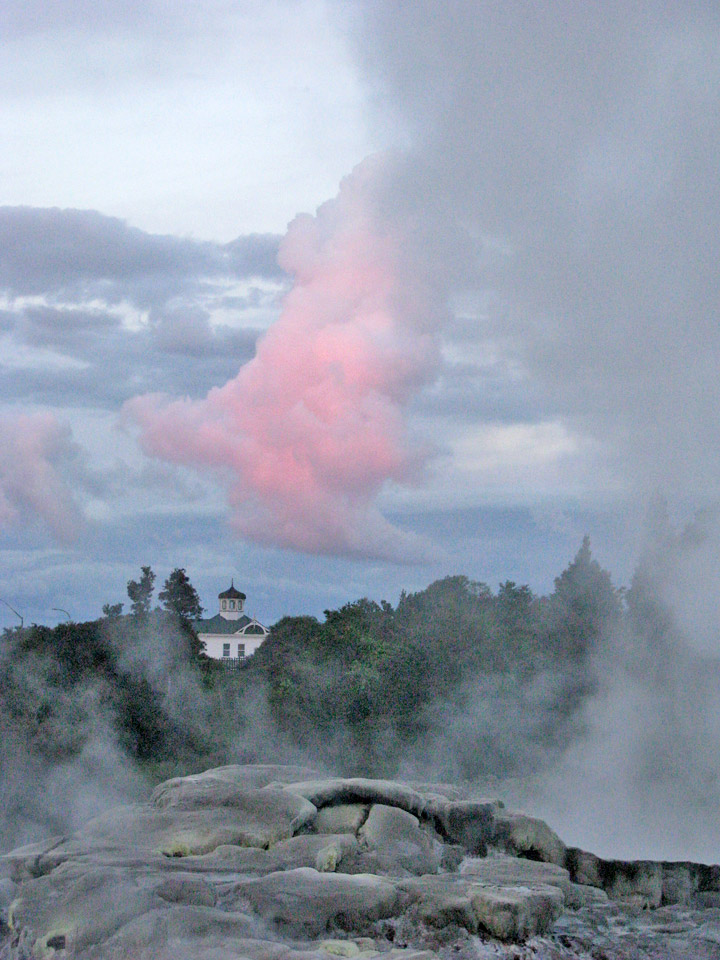
the setting sun
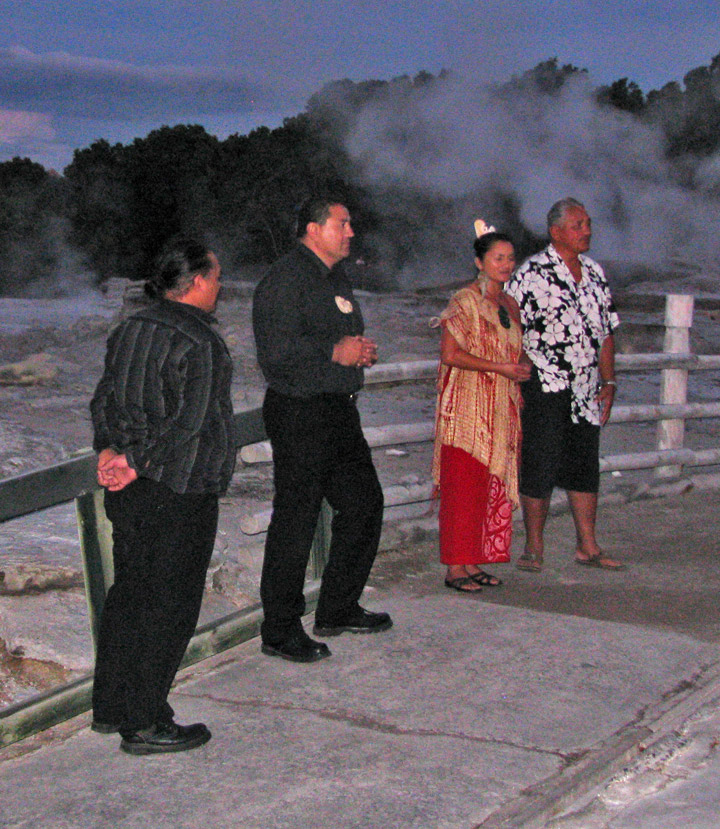
Māori serenade
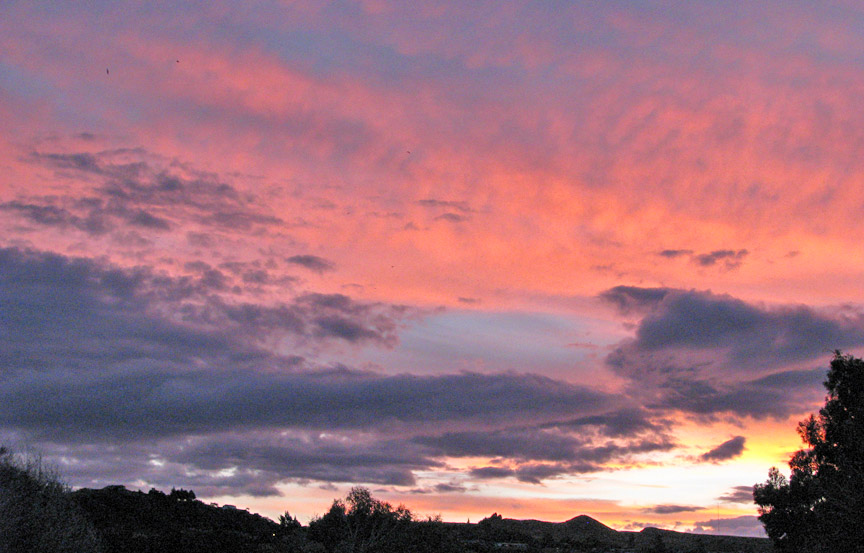
evening sky